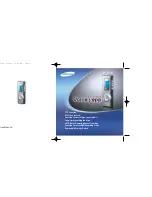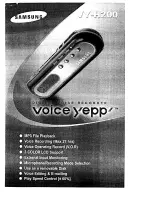
HA249928
Issue 15 Jly 06
Page 8
100 MM RECORDER USER GUIDE
Place new chart in pay-out
tray
Chart guide
Retain chart
behind flanges
Close top
Fan new chart
Take-up retainer
Remove old chart
Lay two or three leaves in
take-up tray, ensuring they
fold naturally. Close take-up
retainer and chart guide.
Remove cassette
2.4 CHART REPLACEMENT
Note:
For recorders with status levels K13 or higher, if the
cassette type (i.e. roll or z-fold) is changed, or if the
recorder loses its configuration, the recorder must be
reconfigured for the correct cassette type (Instru-
ment configuration) or the chart drive will not oper-
ate correctly.
Before changing the chart, carry out a pen park/fan as
described in section 2.3 above. Once the chart replace-
ment is complete, carry out an alignment procedure as
described in sections 3.2.4 and 3.2.5, below.
2.4.1 Z-Fold charts
Remove the cassette, by pulling on the two latches as
shown in the top figure. If a used chart is present, open
the take-up retainer and remove the used chart.
Open the top of the paper pay-out tray, and remove any
residual paper dust. Open the chart guide.
Unpack the replacement chart and fan it several times to
separate the leaves and to remove as much perforation
dust as possible.
Orient the chart so that the circular holes are to the left,
the slots to the right, and the red end-of-chart line to the
back (all directions relative to the front of the cassette).
Place the chart into the pay-out tray, unfolding three or
four leaves at the same time. Pull the free end of the
chart over the drive roller and down behind the chart
guide and lay the free leaves in the take-up tray.
Ensure that the paper folds naturally into the tray, that
the printed grid is uppermost and that the slots are at the
right hand edge of the chart (i.e. the circular holes are to
the left).
Close the take-up retainer and the chart guide, ensuring
the paper holes/slots fit over the sprockets on the drive
roller. Close the top of the paper pay-out tray, ensuring
that the chart is contained behind the flanges on the top.













































